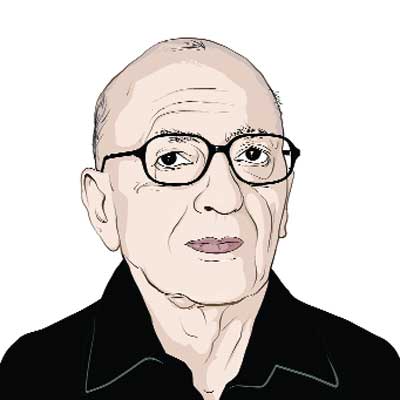Opinion Secret sorties and stolen sheep
How the 1965 war ended
In a previous column in this series (IE,September 4),the narrative of the 1965 India-Pakistan War was brought up to the crucial date of September 11,1965 when Ayub Khan,a realist for all his faults,knew that for Pakistan the war was over. Its carefully crafted counter-offensive in the Khem Karan sector had flopped totally. After a rather long interruption for reasons entirely beyond my control,let me pick up the threads.
While Ayub,with a map on his lap,was gleefully telling his confidant,biographer and alter ego,Altaf Gauhar,that Pakistani Patton tanks would soon be reaching Delhi,his military secretary burst into the room agitatedly to announce that the counter-offensive had foundered because the Indians had cut a nearby canal and inundated the battlefield. The village of Asal Uttar in the Khem Karan sector had become the graveyard of Pakistani tanks. What tormented the field marshal even more was that Indias obsolete Sherman and Centurion tanks of World War II vintage had got the better of Pakistans US-supplied,state-of- the-art Pattons. Yet it took him another 12 days of senseless fighting and avoidable casualties to accept the UN-sponsored cease-fire on which the Security Council was insisting every afternoon. Why?
Not only were Zulfiqar Ali Bhutto and his hard-line cohorts totally opposed to a cease-fire (even though they knew that Pakistan was running out of ammunition as well as spare parts) but also Ayubs loyalists including Gauhar were telling him that there could be no cease-fire unless it was accompanied by some mechanism to solve the Kashmir dispute. When the president testily asked his acolyte: How do I achieve this,Gauhar replied: Sir,you have the China card. Please play it.
Ayub promptly decided to do so. That night a plane carrying him flew to Beijing in even greater secrecy than that surrounding Henry Kissingers historic flight to China five years later. The pilot of Ayubs aircraft was the recently retired first Pakistani air force chief,Air Marshal Asghar Khan. The journey to Beijing and back,after talks with Zhou Enlai,lasted only 24 hours but it was enough to bring home to the military ruler the limitations of the China card. Zhou candidly told Ayub that the only way Pakistan could and should fight India was to follow the Maoist doctrine of withdrawing when the enemy was able to advance,and organise,with the widest participation of the people,a long-term guerilla war against the aggressor.
However,even before Ayub had returned home to keep up the fight for some more days,China gave him such succour as it could without getting militarily involved in the Indo-Pakistan conflict. It issued an ultimatum to India to demolish the illegal structures it had built on Chinese territory opposite Sikkim,and to return to China the yaks and sheep it had stolen.
Most of Prime Minister Lal Bahadur Shastris advisers told him that Chinas threats were hollow but he seemed not to be convinced. For he told K. R. Narayanan then director of the China division in the ministry of external affairs and later President of the republic whatever you might say,a Chinese attack is coming. He therefore offered China a joint inquiry into the location of the controversial structures which Beijing blithely ignored. Meanwhile,angry crowds in Delhi had collected a herd of sheep and goats which they drove to the Chinese embassy displaying placards: Eat them but keep the peace in Asia. At the same time most Sinologists world over were agreed that the irate China-India exchanges were in fact a typewriter war.
At first the Chinese extended their ultimatum by a couple of days. Then they demolished the structures themselves and announced that India had complied with their demand. At this distance of time,it should be admitted that the disputed structures were on the other side of Nathu La. By then Ayub had informed Zhou that his choice was between a draw of some kind and defeat,and he was opting for a draw. International pressure on him had mounted because,on the advice of the army chief,General J. N. Chaudhuri,Shastri had already accepted the cease-fire that eventually became effective from the mid-night of September 23. Unsurprisingly,the cease-fire was fragile and was breached too often,especially by the Pakistani side,greatly embarrassed by the presence of Indian troops in close proximity to Lahore. That is where the now deceased Soviet Unions invitation to Shastri and Ayub to meet in the Central Asian city of Tashkent (now capital of Uzbekistan) to end the state of war came in. The Soviet offer was first conveyed to the two leaders by Soviet Prime Minister Alexei Kosygin soon after the war had begun. Both India and Pakistan had ignored it. But both took it seriously later.
The Tashkent talks began on January 3,1966 and,after teetering on the brink of collapse for several days,succeeded in the wee hours of January 10. The credit for this must go to Kosygins tireless mediatory efforts. The much-applauded Tashkent Declaration was signed at 4 p.m. and festivities the like of which I have rarely seen heavy drinking of toasts was their hallmark began immediately. These,too,proved to be short-lived.
For,within a few hours,the triumph at Tashkent was superseded by the tragedy of Shastris sudden death. The story of the Tashkent talks,I have already told on this page in some detail (IE,January 9,2009) and there is no need to repeat it. In any case,the truce that Tashkent brought to the subcontinent was tattered and the Tashkent Spirit evaporated fast.
On return home Ayub found himself at the receiving end of a vigorous agitation. His government had foolishly misled the Pakistani people into believing that it had licked the Indian invaders. If so,they asked,how come there wasnt a word in the Tashkent Declaration on Kashmir? However,it took them four years to force Ayub to abdicate in favour of another military dictator,Yahya Khan.
In India,the impact of Shastris death was instant and long lasting. It ushered in the Indira Era.
The writer is a Delhi-based political commentator





